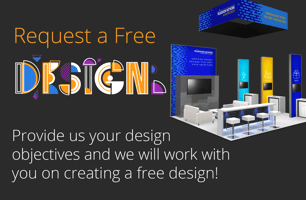Great event design gets its inspiration from a multitude of sources. Maybe that inspiration comes from the world of high-end hotel designers, or it could even be found in the season. I think most would agree that great event design also includes some sort of creative element. The word “creative” is often defined as having the quality of something created rather than imitated. “Creativity” is defined simply as the ability to create. Unbeknownst to me (and certainly not intended), one day I happened upon my creative self. I found him odd at times, difficult to understand and slightly scary, but I welcomed him into my life just the same.
Little did I know that this part of me would end up being my brand and what defines me as an event designer. Everyone has the ability to be creative and everyone has an imagination. The trick is to be open to that voice (or in my case, voices) in your head and in your heart. I am often asked, “What would you tell someone in our industry about being creative? What are some best practices?” And my response is always the same: You can’t measure creativity as a return-on-investment. Creativity lives in the gray areas, not in the black and white of logic.
However, there are some things you need to be mindful of when fostering—and harnessing—creativity. I hope that these tips will guide you in your journey toward better event design.
1. Learn to let go and trust.
Before you can create anything from concept to completion, you need to give yourself permission to fail. Coming up with a bad idea or outlandish notion is all part of the process, and ultimately, your success. Don’t be afraid to fail.
2. Know your audience, know your content.
Using the same design or concept for different groups just won’t work. Each event, each audience, each message is different. Copying what someone else has done can be flattering, but it just won’t work. Tweak, reimagine and make things distinctive to you and your event.
Knowing the message of the event and the heart of what needs to be conveyed is key (and this isn’t necessarily the same as the event content).
Once you know what emotional takeaway is desired, you can then begin to brainstorm how the environment should be designed to communicate and amplify that feeling.

Conversion of Convention Space to a Living Room, Credit: Edward Perotti Events & Experiences
3. Master all logistics.
Before you socialize and/or sell your concept, you should know two things: Can it be executed? Can it be executed within the budget?
Gain a thorough grasp of catering logistics; know your food costs and how chefs think. Learn basic lighting equipment and how it can be used. If you are in a city with unions, know your labor rates and rules. And lastly, understand what is possible from a build perspective.
Mastering the basics in these key areas will keep you on a path of reality vs. fantasy.
Events change, designs evolve, and being able to calculate updates (in real time and on your feet) will save you hours of heartburn.

Bootcamp Event Setup, Credit: Edward Perotti Events & Experiences
4. Have an opinion and a point of view.
If you have been hired to create, produce and execute an event, it’s because your knowledge is of value to the event owners. Never forget that! They will have their own thoughts and ideas, and some may even be useful. However, as much as everyone likes to think what we do is easy, it isn’t. And it makes me laugh a little when they think it is.
The value that you bring is you—your taste, your knowledge, your aesthetic, your panache. Conveying your brand is just as important as executing the logistics of the event.
Personally, I like to think of myself like a fashion designer—I can create a beautiful gown for a client and give her everything she wants, but you’ll still look at it and know that I designed it.
And it’s the same with events. When you walk into one of my events, you know I was there by the way it looks and the way it makes you feel.
5. Inspiration is all around.
Open your eyes and your heart and just look around. Watch a classic black-and-white film to see how the shadows and light interact with the set. Look at the windows of retail stores—the windows at Barney’s, Neiman Marcus, etc., can inspire great ideas on the use of color and textures. Mother nature always provides inspiration regarding patterns, shapes and details.
Take it all in, feel it, and then go back to my first tip.
Ask Yourself: What Is Your Brand About?
Creating one-of-a-kind, unique and memorable events is what I live for.
Giving companies and individuals moments to remember that are positive, uplifting and beautiful (as well as socially and environmentally relevant) is what my brand is all about.
What’s your brand about? How creative are you? How creative do you want to be?
Let’s have some fun and move this industry past what’s expected and create something new and unexpected.
Edward Perotti is a globally recognized bespoke designer who pairs impeccable detail with refined sophistication to create unimagined, one-of-a-kind events. Throughout his 27-plus years of event production, Edward’s central ethos has always been to create an immersive experience. https://www.meetingstoday.com






